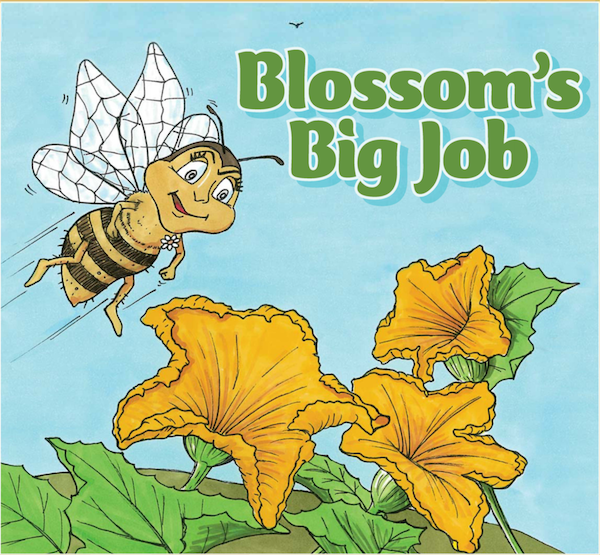School Gardens Build Environmental Awareness
“It is impossible for a child to work [in a] garden without tuning himself to certain universal laws…while he is grubbing in the earth, stirring the soil untiringly so as to let in the moisture and the air, nature’s secrets are sinking deep into his heart.” DORA WILLIAMS from Gardens and Their Meaning, 1911
A school garden is a perfect opportunity to nurture a child’s curiosity and drive to explore the world around them.
A garden puts understanding of the natural world at a student’s fingertips, by providing the context to observe the language of nature and principles of ecology hands-on. In a garden, ecological relationships and principles that are often invisible to us come to the forefront: diversity, energy and resources, sustainability, community, interdependence, cycles, succession and more. Children explore, experience, understand and see first-hand these relationships and phenomena at work first hand in their school garden.
Your school garden is an ecosystem to explore, and the living and non-living things in this ecosystem are interconnected through networks of relationships.
One of the key characteristics of these living networks is the fact that all of their nutrients flow in cycles. In an ecosystem, energy flows through the network, while the water, oxygen, carbon, and all other nutrients move in ecological cycles.
Energy flow and nutrient cycles are essential phenomena in nature and we can observe these phenomena in our garden.
Through observing these cycles, students understand that their garden is embedded in larger systems that are again living networks with their own cycles. Our food web intersects with these larger cycles—the water cycle, nutrient cycle, the cycle of the seasons, plant life cycles and so on, all of which are links in a planetary web of life. Our food and farming systems depend on the functioning of these cycles and relationships.
Even for the youngest students, observing the natural cycles cultivates wonder and appreciation for our natural world. By creating opportunities to foster wonder and understanding, we can help students to appreciate and care for the natural world. This care help students to develop their responsibility as stewards of our environment. In cultivating stewardship in youth, we ensure these ecological systems are protected and that our food and farming systems continue to provide us fresh, safe and nutritious food.
A few ideas to get your students thinking about ecosystems and natural cycles:
-
What other cycles can you and your students observe in the garden? Are there any relationships that occur time and again? Discuss the ecological cycles and events that can be completed in a minute, an hour, a day, a week, a month, and a year. Do you see the water cycle occurring in your garden?
-
Build a bottle ecosystem! You can make a simple self-sustaining terrarium from a 2-litre pop bottle. Students can observe the interactions, relationships and cycles occurring in their ecosystem. Building is just the beginning! Have students monitor their ecosystems and record their observations in their journal. Check out these examples here.
-
Head outdoors! Take your students on a walk around a nearby park, garden or your school grounds. Ask students to observe the environment and list all of the animals they see: birds, cats, insects, groundhog. After they’ve written their list, ask them to consider what each animal eats and how it might be connected to other animals, to trees, nature and to humans. You could ask students to imagine a day in the life of one of the animals they saw. What do they eat? Where do those plants or animals get their energy? What kinds of predators do they need to watch out for?
-
How are we Connected? A Resource by Shelburne farmers How are We Connected? is a teachers resource to help students develop an understanding of and appreciation for where our food and fibers come from. Students learn about the ideas of community, interdependence, cycles, and how all things change over time. There are over 75 “facilitated learning experiences” organized around four “threads” that flow through the seasons: Who Are We?, Who Lives Here?, What’s Happening?, and How Are We Connected?
-
Try this Web of Life activity for Grade 3-5 students.
Project Learning Tree also suggests turning the Web of Life activity into a game. From Project Learning Tree: “You can also get your class onto its feet by turning this activity into a game: all you need is a ball of yarn and some name tags. Once your students have had a chance to try the activity on paper, assign each of them (and yourself) a species from the forest ecosystem and give them a matching species name tag.
Then, gather all your students in a circle. Start the game by throwing the ball of yarn to one student and explaining how your species is connected to theirs. He or she, in turn, chooses someone else in the circle. After explaining how their species is connected to the species represented by the student they chose, toss them the ball of yarn. Continue until every student is linked into your classroom ecosystem.
Once all the students are part of the ecosystem web, you can ask questions to explore how changes in habitat and predators affect the web. For example, you might ask: If a farmer kills all of the wolves in the area to protect their livestock, how would it affect the ecosystem? Have the student representing the wolf let go of their string to show that the wolves are no longer part of the web. This exercise further demonstrates how connected the ecosystem really is.”

